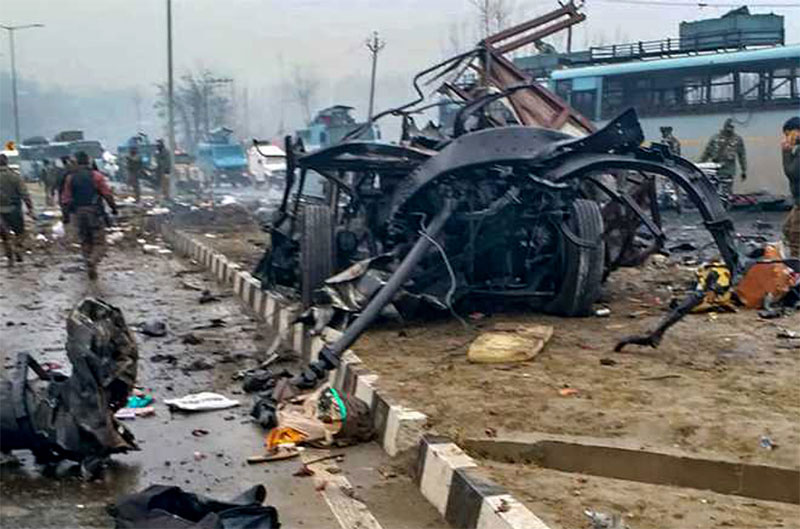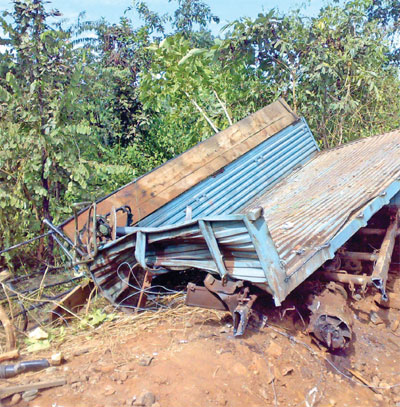Road opening parties failed to do their job, leading to Bhimber Gali, Dantewada attacks
 S.K. Sood
S.K. Sood
Two more tragic incidents of ambush by militants have taken place after the interview by Satyapal Malik, who was the Jammu and Kashmir Governor when the Pulwama bombing took place on 14 February 2019. In the interview, Malik mentioned the grave mistake of Ministry of Home Affairs in not acceding to the request of CRPF authorities for airlifting the troops stranded at transit camps in Jammu due to the closure of the road for over a week. Malik also pointed out failures at operational levels by the troops, who failed to sanitise the area for safe movement of the convoy on the highway located in a militancy-prone area.
Questions about incompetence at various levels of the security establishment and the political leadership were raised even at the time of the incident by several analysts and thinkers but remain unanswered till now.
Glaring mistakes committed by functionaries at various levels in the Pulwama incident is apparent even to a layman. However, what is troubling is the fact that we refuse to learn from those mistakes and continue to repeat them. The ambush on the Rashtriya Rifles convoy near Bhimber Gali on April 20 in which five soldiers lost their lives and the ambush at Dantewada, Chhattisgarh, on April 26 point towards institutional failures and callousness leading to precious loss of lives of trained soldiers.
The ambush of the RR convoy at Bhimber Gali in particular has eerie similarities with the Pulwama bombing. The absence or lack of response by the Road Opening Party (ROP), if it was deployed, and the absence of reaction by the troops in the accompanying vehicles in both the incidents point towards lack of training and inability of junior commanders to take the initiative. The absence of specific actionable intelligence was another deficiency common to both the Pulwama and Bhimber Gali incidents.

The deficiency in the Dantewada incident is a repeat of the failures that took place in the 3 April 2021 operation in Chhattisgarh, where troops withdrawing after an operation in the jungles of Bijapur, were trapped in an ambush by militants leading to 22 causalities of state District Reserve Guard (DRG), state Special Task force (STF) and CRPF personnel. Both the incidents could have been averted had the supervisory leadership ensured securing the line of communication and a route of withdrawal for the large number of troops inducted for the operations. In the April 2021 incident, the militants had laid an ambush on the only available route of withdrawal in the jungle because it was not secured. The only difference in the latest incident in Dantewada is that the troops were moving in a vehicle and one of the vehicles was blown away by an IED, which perhaps was planted on the metaled road long time ago, either before the road was made or by tunnelling below the road.
The militants, who must have been closely observing the movement of the DRG and police personnel, were apparently getting real time information of their return movement from the same route and activated the IED killing one civilian and 11 DRG personnel. While the surprise element in the outward moves may thwart militants from initiating any action, return journeys especially on the same route without securing the road/ route are always fraught with threat of IED or ambush. The road in this case apparently wasn’t secured by the ROP nor were own sources activated to obtain real time information about militant activities.
The basic tactic is to ‘always keep one leg on the ground,’ that is always retain a foothold while carrying out any operation. The ROP is the foothold that is needed to ensure smooth move of convoys in militancy-prone areas. Keeping in view the frequent violence in terrorism-prone areas it becomes important to provide security cover to security personnel, equipment, leaders and important dignitaries during their movement by road. The ROPs thus prevent terrorists from ambushing convoys and inflicting casualties. The troops sitting in vehicles are more vulnerable as compared to the marching columns. Hence the movement of vehicles in convoys has to be properly planned with adequate protection, including ROP and picketing along the road. In case of any eventuality, it should be tackled with determination, aggressive action and without any loss of time. All these elements were missing in the Pulwama, Bhimber Gali and Dantewada incidents.

The ROPs are laid for the specific purpose of sanitising the road of any threats of interdiction by militants both on the road itself as well as from small arms fire. The ROPs in their specific areas must walk not only along the road to sanitise it but also on features dominating the road so that militants are prevented from bringing down fire from within the small arms range. The ROPs must also have a component deployed for controlling access and screening other vehicles and persons so that they do not enter the sanitised highway/area.
It is obvious that the ROP in Pulwama did not carry out its task with due deligence and failed to control access to the highway where the convoy was moving, confirming the statement of Malik that none of the nearby approach roads leading to the highway were covered by troops by setting up a road block or mobile check posts. Had they done so, it would have been impossible for the RDX-laden vehicle to breach the layers of security and ram into the CRPF vehicle. But if these measures were put in place, why could the troops not detect and intercept it before the militants inflicted the huge damage? The argument that the explosive laden vehicle was already in the vicinity also goes to prove the incompetence of the ROP because they failed to notice its presence even though it was there for a prolonged period. An alert ROP would have noticed, isolated and subjected it to thorough search, thus preventing the tragedy. Such an eventuality would have helped expose the conspirators and brought them to justice. If the initial reports attributed to CRPF sources are to be believed, the explosion was accompanied by firing. The matter attains more serious proportions if that is the case. How could the ROP not detect the collaborators of the bomber in-spite of being in place for the better part of the day?
Incompetency also led to the ambush near Bhimber Gali on April 20. It appears that the lull in militant activity in the hill regions of Jammu made authorities complacent and the practice of deploying ROP in this area was discontinued. Security forces need to pay more attention to this area to ensure that militancy doesn’t get revived here. Another aspect that needs to be ensured is that correct information should be disseminated. The first information that was circulated by media about Bhimber Gali incident was that the vehicle had caught fire resulting in causalities. Information about militants ambushing the vehicle came much later. Such gaps in the information tend to create a crisis of credibility, which must be avoided.
But the most glaring lapse is the massive Intelligence failure among various agencies. The question that immediately comes to the mind is how could such a large quantity of RDX have been be procured by the perpetrator, loaded on to a vehicle and brought to the scene of the crime at Pulwama? Why couldn’t the intelligence agencies trace the footprints, electronic or otherwise, which the perpetrators must have left behind while planning and tying up the logistics of such a massive operation? Even the internal inquiry report of the CRPF in the Pulwama incident appears to have concluded that there was a massive intelligence failure. However, reportedly the Ministry of Home affairs differs.

Lack of actionable intelligence is a recurring phenomenon, which is then covered up by bringing to the public domain some obscure document or a signal as was done after the Pulwama incident. Such lapses were evident even during the Kargil episode when we failed to discern the pattern and aggressive intent of Pakistan.
Our intelligence operatives need to hone the art of culling intelligence by analysing various strands of information through proper corroboration to discern a pattern. Such skills cannot be developed overnight and the intelligence operatives have to be at it for long duration in order to master the art. Furthermore, the intelligence operatives have to realise that intelligence is meant for action by operational level people and should be disseminated to them at the earliest. However, in their anxiety to impress their bosses this requirement is often overlooked and the intelligence loses its relevance by the time it travels up and down the channels. The intelligence fraternity oftens laments that their successes remain unsung while their lapses get highlighted. However, even one failure or lapse is unforgivable because it involves the lives of soldiers in whom the government has invested time and money for training to ensure national security. The biggest loss is of the families for whom the departed soldier is more often than not the sole bread winner.
One may keep speculating on whether the airlifting of the CRPF soldiers would have prevented the ambush or not. Maybe the ambush would have been executed by the militants on a subsequent date. The important question however remains as to why the request of the CRPF for airlifting them was not granted even though the resources were available in shape of the air wing of the BSF? Why were over 2,500 troops compelled to live in sub-human conditions for a prolonged period in a transit camp meant only for about couple of hundred troops.
Malik and many experts have been asking these questions. These tragic incidents need to be inquired into seriously so that the truth comes out in the public domain and remedial actions can be taken by all the concerned.
Hopefully the Pulwama bombing and subsequent incidents have compelled the authorities in different security forces to review the training philosophy and methodology, especially for operating in a low intensity conflict environment. It needs to be emphasised that the SOPs have to be adapted to a local operational situation. It is the spirit of SOPs that must be followed. For this to happen, the junior leadership needs to be empowered and encouraged to exercise initiative. The senior leadership must focus on their role of empowering, supervising and hand holding when genuine mistakes happen besides planning operations and contingencies. Equally important is deterrent action and censuring incompetent personnel so that similar mistakes are not repeated.

